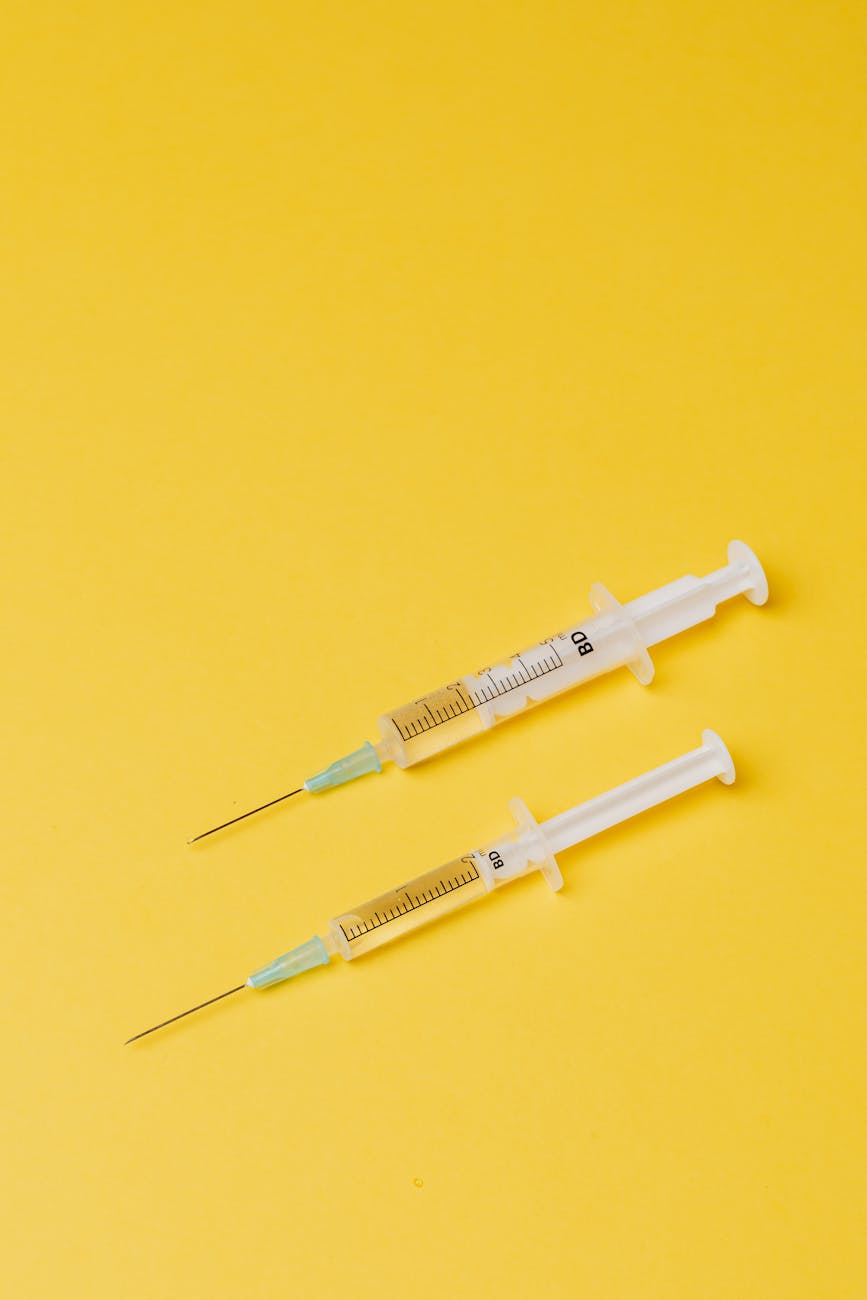In addition to understanding units, mg, mL, volume, concentration, and dosing, compounded GLP-1 users should also be familiar with needles and syringes.
Always review and follow your provider/pharmacy’s dosing instructions. Whenever you start a new vial, double-check the concentration of the vial against your dose.
- Type of Syringe
- U-100 insulin syringes are used for GLP-1 injections. There are different size U-100 syringes which hold different capacities but a unit is the same across all U-100 syringes.
- Understanding Syringe Markings:
- Insulin syringes are calibrated in units which is a measure of volume. Units does not directly indicate the amount of medication, as it needs to be combined with the concentration to understand how much drug is being dosed. Doses are indicated in mg, not units. See this post for more information explaining various units and dosing.
- In a U-100 syringe, each “unit” represents 0.01 mL
- 100 units = 1mL
- The markings on the barrel of the syringe indicate the number of units
- NOTE: a unit is sometimes erroneously referred to as a “cc” in this subreddit. This is incorrect as 1cc = 1mL.
- Syringe Sizes:
- Syringe sizes vary by capacity and are chosen based on the required dose:
- 0.3 mL syringe: Holds up to 30 units, suitable for small doses
- 0.5 mL syringe: Holds up to 50 units
- 1 mL syringe: Holds up to 100 units, ideal for larger doses
- Regardless of the size/capacity, units will always be the same across syringes as long as you are using a U-100 syringe
- i.e. 10 units on a 0.3mL syringe is the exact same volume as 10 units on a 1mL syringe
- Syringe sizes vary by capacity and are chosen based on the required dose:
- Needle Gauge and Length:
- Gauge: Refers to needle thickness. Higher gauge numbers indicate thinner needles (e.g., 31-gauge is thinner than 29-gauge). 31 gauge is most common for GLP-1 injections.
- Length: 8mm (5/16 inch) is the most common length for GLP-1 dosing and is suitable for subcutaneous injections
- Measuring a Dose:
- After determining what your dose in mg will be in units (depending on the concentration of your vial), fill the GLP-1 medication to the number of units indicated on the barrel of the syringe, see graphic below
- In other words, align the top of the plunger (the part of the black rubber stopper that is closest to the needle) with the marking that matches the prescribed dose
- Always double-check your dose to ensure accuracy
- Choosing the Right Syringe:
- If buying supplementary syringes, make sure you are purchasing U-100 syringes (as opposed to U-40 veterinary syringes)
- Match the syringe size to your dose to avoid overfilling or difficulty reading markings
- e.g. if your dose equates to 12.5 units, you will want a smaller capacity syringe for easier reading of the markings
- e.g. if your dose equates to 100 units, you will want a larger capacity syringe so you can fit your entire dose in one syringe
- Tips for Safe Use:
- Always use a new syringe for each injection
- Never puncture a vial with a used syringe
- Dispose of syringes safely in a sharps container
- Ensure hygienic practices
- Store syringes in their original packaging in a dry place at room temperature (not in the fridge)
- It is best practice to draw your medication immediately before your injection as syringes are not considered sterile storage devices
- If you need to set your syringe down before injecting, recap it
- Review your pharmacy/provider’s dosing instructions before injecting yourself
- When starting a new vial or changing your dose, triple-check the concentration against your dose
- You can use a dose calculator like https://www.fatscientist.com/ to check your dose but you MUST understand the various units before using a dose calculator. If you don’t understand the units you can input incorrect data and receive an incorrect dose calculation.

Where to buy syringes
You may be able to buy syringes from your local pharmacy but some pharmacy technicians are hesitant to sell syringes without a prescription.
You can buy syringes online from diabeticwarehouse.com without a prescription.
- 1mL 31g 5/16″ syringes (100 unit)
- 0.5mL 31g 5/16″ syringes (50 unit)
- 0.3mL 31g 5/16″ syringes (30 unit)
While you’re there, order an extra box of alcohol wipes.
